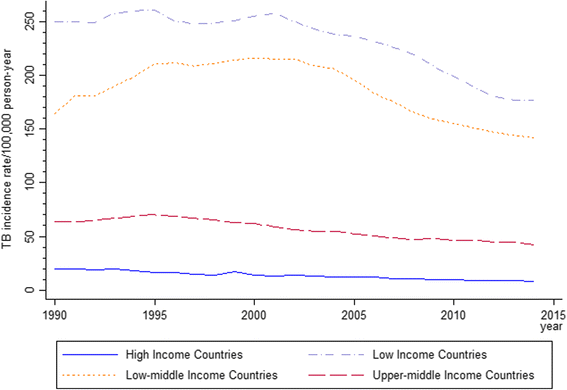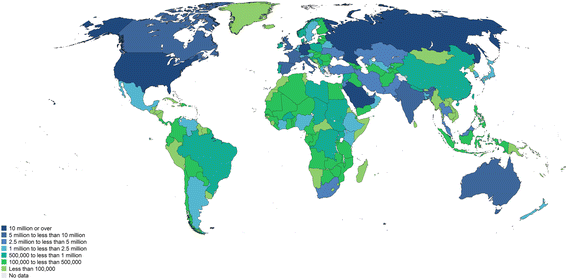Migration to middle-income countries and tuberculosis-global policies for global economies
- PMID: 28298223
- PMCID: PMC5353961
- DOI: 10.1186/s12992-017-0236-6
Migration to middle-income countries and tuberculosis-global policies for global economies
Abstract
Background: International migration to middle-income countries is increasing and its health consequences, in particular increasing transmission rates of tuberculosis (TB), deserve consideration. Migration and TB are a matter of concern in high-income countries and targeted screening of migrants for active and latent TB infection is a main strategy to manage risk and minimize transmission. In this paper, we discuss some aspects of TB control and migration in the context of middle-income countries, together with the prospect of responding with equitable and comprehensive policies.
Main body: TB rates in middle-income countries remain disproportionally high among the poorest and most vulnerable groups in large cities where most migrant populations are concentrated. Policies that tackle migrant TB in high-income countries may be inadequate for middle-income countries because of their different socio-economic and cultural scenarios. Strategies to control TB in these settings must take into account the characteristics of middle-income countries and the complexity of TB as a disease of poverty. Intersectoral policies of social protection such as cash-transfer programs help reducing poverty and improving health in vulnerable populations. We address the development of new approaches to improve well-established strategies including contact tracing and active and latent TB screening as an 'add on' to the existing health care guidelines of conditional cash transfer programs. In addition, we discuss how it might improve health and welfare among both poor migrants and locally-born populations. Authorities from middle-income countries should recognise that migrants are a vulnerable social group and promote cooperation efforts between sending and receiving countries for mitigation of poverty and prevention of disease in this group.
Conclusions: Middle-income countries have long sent migrants overseas. However, the influx of large migrant populations into their societies is relatively new and a growing phenomenon and it is time to set comprehensive goals to improve health among these communities. Conditional cash transfer policies with TB screening and strengthening of DOTS are some strategies that deserve attention. Reduction of social and health inequality among migrants should be incorporated into concerted actions to meet TB control targets.
Keywords: Health equity; Low- and middle-income countries; Migration; Tuberculosis.
Figures


References
-
- WHO . Global tuberculosis report 2015. Geneva: World Health Organization; 2015.
-
- UNDP . Human development report 2014. Sustaining human progress: reducing vulnerabilities and building resilience. New York: United Nations Development Programme; 2014.
-
- UNAIDS . The cities report 2014. Geneva: Joint United Nations Programme on HIV/AIDS; 2014.
-
- The World Bank Group. World Bank Country and Leading Groups. World Bank list of economies, Washington. 2016. http://databank.worldbank.org/data/download/site-content/CLASS.xls. Accessed 20 Sept 2016.
MeSH terms
LinkOut - more resources
Full Text Sources
Other Literature Sources
Medical

